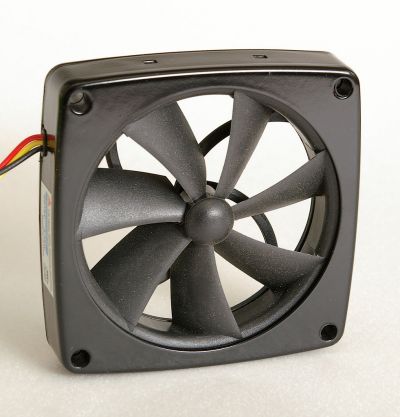Efficient cooling of electronic devices

Luefter y.s.tech
By User Smial on de.wikipedia (Own work) [FAL, GFDL 1.2 (http://www.gnu.org/licenses/old-licenses/fdl-1.2.html) or CC BY-SA 2.0 de (http://creativecommons.org/licenses/by-sa/2.0/de/deed.en)], via Wikimedia Commons
Thermal management is a hot topic in microelectronic and optoelectronic devices. An EU-funded project is working on integrating an innovative cooling system that unlike conventional solutions that use single-phase liquids or gases involves two-phase flows.
An ever-present challenge in microelectronic devices is to make sure
they will stay within their safe operating limits in terms of power.
Generally, the more power that is involved, the more power dissipation
there will be and thus a rise in temperature. The heat generated must be
dissipated to improve reliability and prevent premature failure.
The EU-funded project 'Thermal management of high power microsystems using multiphase flows' (THERMAPOWER) is taking important steps towards developing novel, efficient and reliable thermal management by conducting extensive studies into two-phase flows and heat transfer. The key topics under research include pool boiling, evaporation, flow boiling and condensation.
Scientists will experimentally investigate two-phase flows in tubes and channels with a variable surface patterning. Through novel imaging techniques, they will characterise the two-phase flow regimes near the boiling nucleation with structured or coated surfaces.
Work also includes quantifying condensation and evaporation heat fluxes for surfaces with different degrees of wetting in microchannels with different cross-sections. The flow instabilities associated with two-phase flows will also be quantified.
To date, scientists have produced new insight into flow instabilities during flow boiling in single- and multi-channel heat sinks. Results have demonstrated that instabilities can be recorded when measuring pressure drops or temperature across channels. Through a novel thermal imaging technique, scientists have revealed the flow structure during flow boiling.
Work was also geared towards studying the evaporation of single sessile drops and bubble growth. Scientists proved the existence of hydrothermal instabilities, as well as of a thin wetting film at the base of growing bubbles during evaporation. Furthermore, they have produced the first-ever model to describe the 3D nature of the phase-change process during the evaporation of wetting drops on heated surfaces.
THERMAPOWER is a collaboration between China, the EU and the United States. Project findings should have important implications for devices as diverse as cell phones, refrigeration systems, supercomputing clusters and space equipment.
published: 2015-06-24

